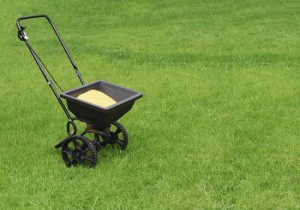
Our Clients:

Overseeding Your Fall Lawn
5 Tips for Winterizing a Lawn
September 11, 2014Caring for Your Hydroseed Lawn
September 30, 2014
This blog was first published in May of this year. With some updates it appears here again as we wind down into autumn. Reposted: September 18, 2014.
Overseeding Tacoma Lawns
The process of overseeding is imperative to growing a healthy, strong lawn that covers your property with lush grass. While fertilizing can go a long way to keeping your lawn healthy, after a few years grass plants slow their reproduction process. This gives weeds a better chance to grow and consume your lawn. Overseeding takes a little preparation, but with the right high-quality seed mix the results are well worth it. Here are steps you can take to make it a success.
Steps for Lawn Overseeding in Tacoma
Lawn Maintenance
The first thing you have to consider is the time of year for your overseeding. September is generally viewed as the best time to start. Give the lawn a decent mow, but do not worry about getting it down to the root. It is not necessary to cut it super short for the seeds to take. Rake up all the grass clippings so the seeds can get into the soil, then loosen the soil using roto-tilling, aerating, or heavy raking.
Prepare Your Soil
Determine the pH level of your soil. Ideally, it should be between 6.0 and 6.8. Ask a professional to help you or buy a kit to perform the test yourself. You have the option of applying lime to the lawn, as it will help balance the pH level. However, it is not required. You will want to topdress the lawn with a very thin layer of compost to help the seeds germinate. Too little is better than too much compost, as you do not want to bury the existing grass. Spread the compost with a rake until it is evenly distributed.
Spread the Seed
Spread the grass seed evenly over the entire lawn by using the amount that is recommended on the seed packaging. Choose a seed that blends with your existing lawn, and remember that you really do get what you pay for, so cheap options are not always the best. You can lightly rake the area to help the seeds settle into the soil. Water the lawn at least 3 to 4 times every day for the first few weeks so you can be sure the seeds will germinate. You can apply fertilizers as well, and remember to mow the lawn once it hits 2 to 3 inches in length.









